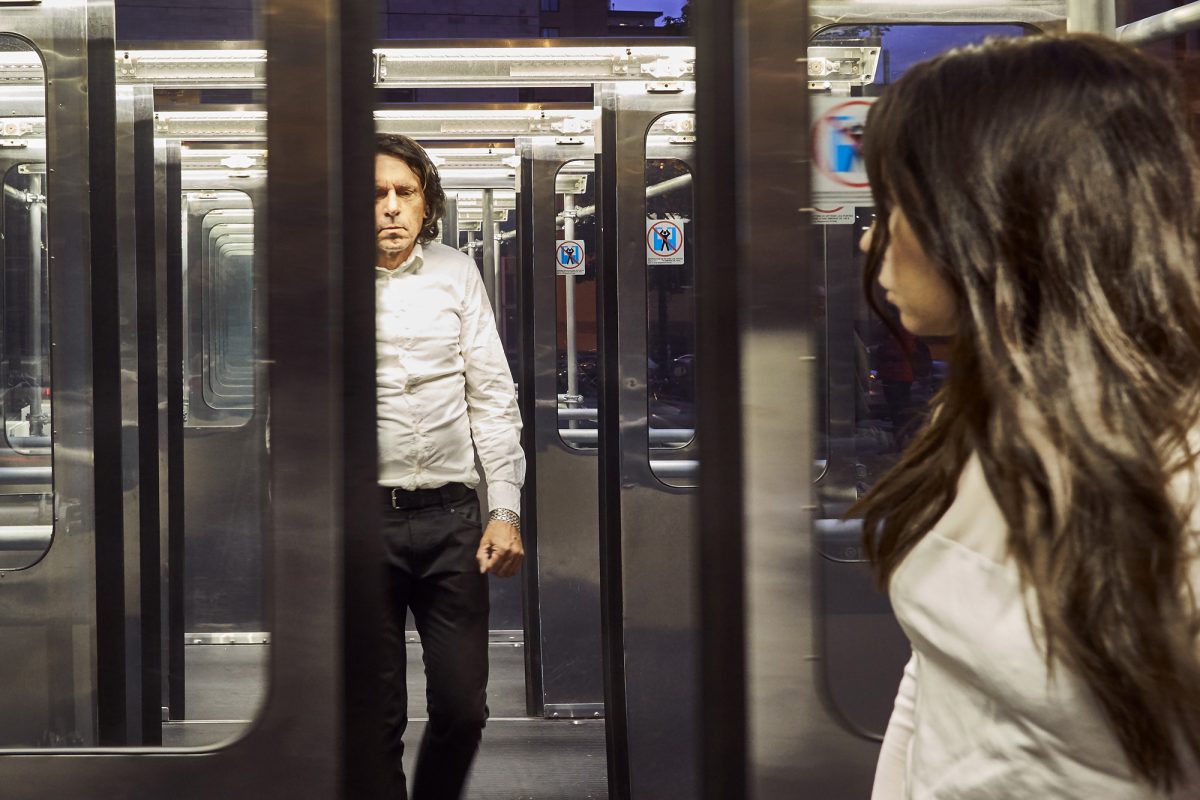Thresholds, Nathalie Bachand
Canada Council for the Arts

Thresholds, 2017
Thresholds is an interactive installation that invites the general public to embark on a journey. It is a crossing that calls to mind the velocity of our urban journeys, small moments in everyday time and space.
Made up of a dozen metro car doors, the work activates in the presence of visitors. It literally holds the doors open for them as they approach and walk through it. The components come from old MR-63 metro cars, whose impact on the collective Montréal imagination is undeniable. The piece serves to keep this technological memento alive. The old cars were retired to a recycling centre, where they were ripped apart and recycled at great cost to the environment. In our consumerist society, technological objects become obsolete at an accelerated pace in a process that depreciates vestiges of the past. The technical development narrative contained in each progression is quickly undermined in disruptive chains of innovation. The parts that are reused after having been idle for some time still hold a treasure trove of, and tell a story about, human inventiveness. Dismantling obsolete mechanisms and giving them new life is fascinating because its dislocation updates human know-how and reveals where it was in terms of progress at a given time.
As visitors approach the installation, the first door opens and invites them inside. In a simultaneous sequence, the other doors give way and then close behind them to follow the movement of bodies through this transitory space. The successive mechanised opening and closing of the doors is synchronized thanks to sensors: anticipating the presence of a passenger, Thresholds sets off a fluid wave of movement triggered by an interactive system. It is a meeting and a convergence of two eras, that of integrated circuits governing the mechanical parts of a bygone one. The mechanism on each sliding door is showcased inside a Plexiglas box, so visitors can see it hard at work as they progress through the doors. Opting for transparency, the installation retains and remakes the internal mechanics of the original devices, highlighting them and reaffirming the innovation lying dormant at the heart of obsolescence.
This is not the first time de Broin revisits the mechanics of industrial objects in order to shift their function and meaning. In fact, several works come to mind: Monochrome Bleu (2003) was a spa made out of a used waste container; Keep on Smoking (2005) presented a bike on which the cyclist’s efforts literally went up in smoke; the bold Shared Propulsion Car (2005) featured a 1986 Buick Regal cruising the busy streets of New York City. The vehicle’s exterior appearance remained intact but its motor worked without fuel, having been modified to run on the energy exerted by human beings using pedals. This performative piece is a caustic statement on the apocalyptic consequences of consumerism and technical progress. Stripping these industrial objects of their paralytic statuses—whether with waste containers, vehicles or metro doors—present an opportunity to activate the speculative mechanics through which we can investigate other worlds stemming from the relics of our current environment. It is also a form of technical archaeology—modifying objects from our world is in essence formulating hypotheses about it, about its potential and its limitations, about what is possible and what isn’t, or even what is no longer possible. The process by way of which objects are made obsolete tends to defy that potential, our ability to reuse technological artefacts.
Thresholds is an interactive installation that relies on both technology and technics, but its powerful materiality is what provides a complex sculptural experience. It can be experienced from the inside or contemplated from the outside, while motionless or in motion—whatever suits one’s fancy. Whether the visitor is a passenger activating the mechanism or a spectator to the transit, what is seen and experienced will correspond to different time lapses and perspectives; the installation is subject to a dual reading. While visitors may be given the impression that the machine is molding them by opening around them without any resistance as they make their way through the piece, the passage may look, from an external vantage point, like the visitors are being swallowed, even devoured. The work is analogous to manducation, an amalgam of the installation’s mechanical aspect and something reminiscent of the organic realm.
The parallel with ingestion/digestion is echoed in the broader notion of transformation. While the installation has been assembled using subjugating devices (sensors, doors, circuits, programs), the proposed experience defies initially programmed behavioural expectations. It is inversely multiple, transformative and moving. No part of it is static, and neither is the very principle of what keeps the experience fresh.
The piece and the journey through it suggest a renewed desire for progressing though a mise en abyme of thresholds. Is it about transition toward the future or through the technical memory of its components? Or rather, it is about entering a present time where resistance is weakened and where what is seen and experienced is simultaneously affirmed and softened, offering visitors a moment in which dualities momentarily cease to oppose each other. The world opens up, every movement traversing it tearing through the fabric of time: every gesture brings forth an immediate future, already relegating the gesture’s genesis to the past.